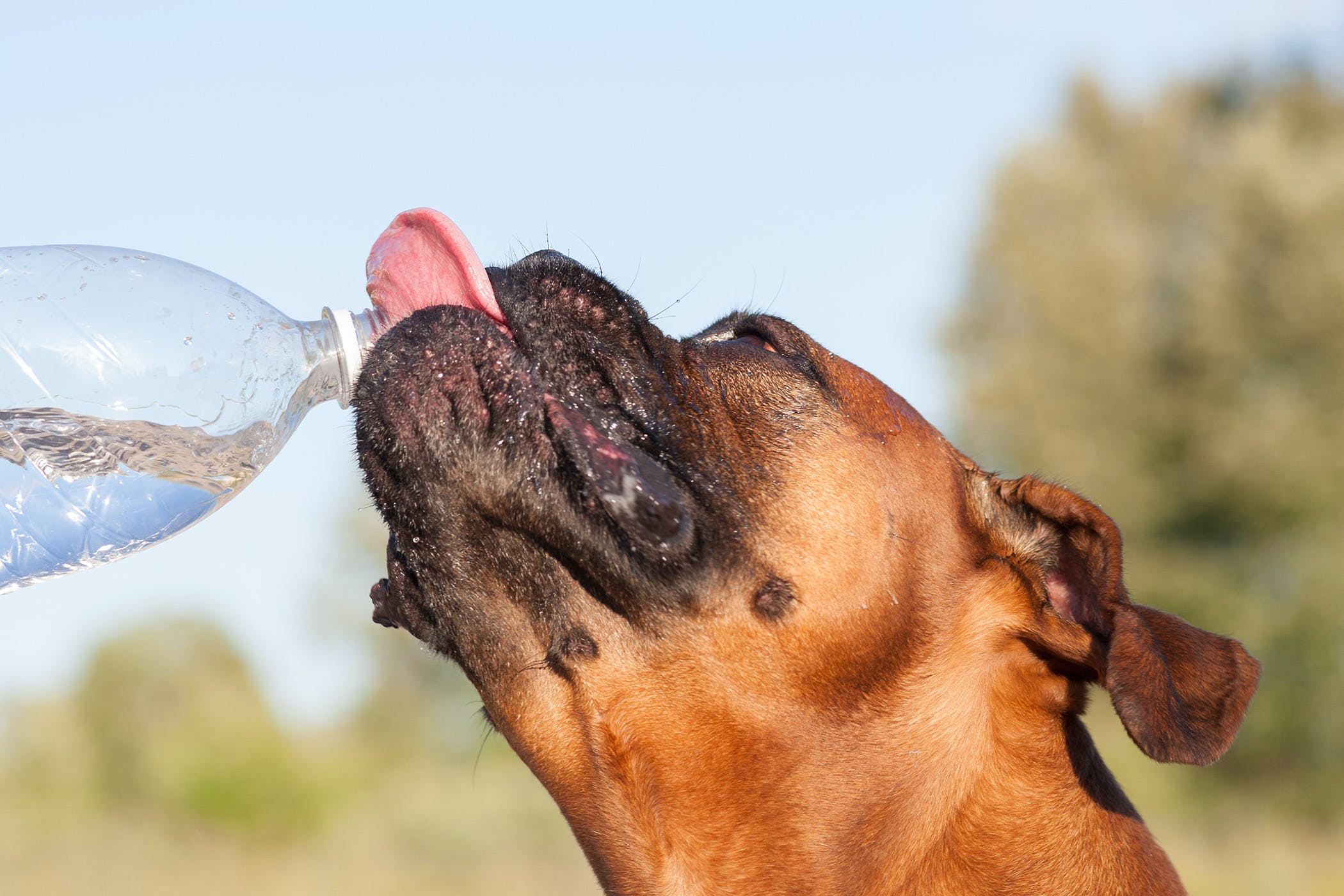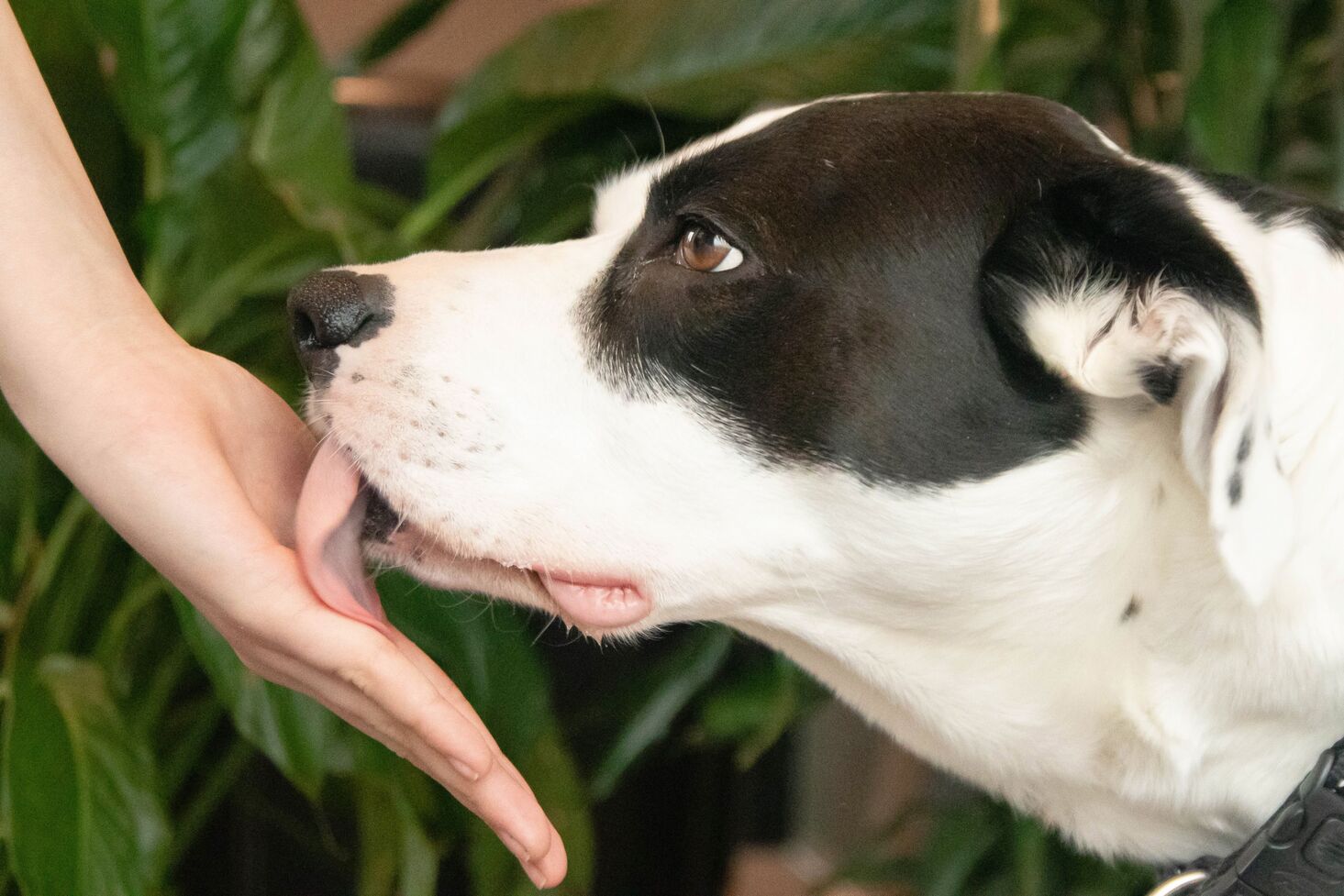Home>Health & Wellness>Common Health Issues>Why Do Diabetic Dogs Drink So Much Water


Common Health Issues
Why Do Diabetic Dogs Drink So Much Water
Published: January 31, 2024
Learn about common health issues in diabetic dogs, including excessive thirst and drinking, and how to manage these symptoms for your pet's well-being.
(Many of the links in this article redirect to a specific reviewed product. Your purchase of these products through affiliate links helps to generate commission for Pawsomeoldies.com, at no extra cost. Learn more)
Table of Contents
Introduction
Diabetes is a common health issue that affects not only humans but also our beloved canine companions. When a dog is diagnosed with diabetes, it can be a concerning and challenging time for pet owners. One of the most noticeable symptoms of diabetes in dogs is excessive thirst, also known as polydipsia. This symptom often raises questions and concerns among pet owners, leading them to wonder why their diabetic dogs drink so much water.
Understanding the underlying reasons behind this behavior is crucial for managing the condition effectively and ensuring the well-being of our furry friends. In this article, we will delve into the relationship between diabetes and excessive thirst in dogs, shedding light on the factors that contribute to this phenomenon. By gaining insight into this connection, pet owners can better comprehend their diabetic dogs' needs and provide them with the care and support they require.
As we explore the intricacies of diabetes in dogs and its correlation with excessive thirst, it's essential to approach the topic with empathy and a genuine desire to enhance the lives of these special companions. By delving into the physiological and behavioral aspects of this health issue, we can equip ourselves with the knowledge and understanding necessary to address the needs of diabetic dogs with compassion and expertise.
Read more: Why Is My Diabetic Dog Shaking So Much
Understanding Diabetes in Dogs
Diabetes mellitus, commonly referred to as diabetes, is a complex and chronic health condition that can affect dogs of all breeds and ages. Similar to humans, dogs can develop diabetes when their bodies are unable to regulate blood sugar levels effectively. This inability stems from a deficiency in insulin, a hormone produced by the pancreas that plays a pivotal role in controlling blood glucose.
There are two primary types of diabetes that can manifest in dogs: type 1 diabetes and type 2 diabetes. Type 1 diabetes occurs when the pancreas fails to produce sufficient insulin, leading to an imbalance in blood sugar levels. On the other hand, type 2 diabetes arises when the body becomes resistant to the effects of insulin, causing glucose to accumulate in the bloodstream.
In diabetic dogs, the absence or ineffectiveness of insulin disrupts the normal utilization of glucose by cells, resulting in elevated blood sugar levels. This metabolic imbalance can give rise to a myriad of symptoms, including excessive thirst, increased urination, weight loss, lethargy, and changes in appetite.
Furthermore, certain factors can predispose dogs to developing diabetes, such as genetic predisposition, obesity, and underlying health conditions. Breeds such as Pugs, Beagles, and Golden Retrievers are among those with a higher susceptibility to diabetes.
Understanding the underlying mechanisms of diabetes in dogs is crucial for pet owners and veterinarians alike. By recognizing the signs and symptoms of diabetes, early intervention and appropriate management strategies can be implemented to mitigate the impact of the condition on the dog's health and well-being.
As we delve deeper into the complexities of diabetes in dogs, it becomes evident that this condition necessitates a comprehensive approach that encompasses medical management, dietary modifications, and attentive care. By gaining a thorough understanding of diabetes in dogs, pet owners can play a proactive role in supporting their furry companions through this challenging health journey.
The Link Between Diabetes and Excessive Thirst
The connection between diabetes and excessive thirst in dogs is rooted in the intricate interplay of physiological processes within the canine body. When a dog develops diabetes, whether type 1 or type 2, the absence or ineffectiveness of insulin disrupts the regulation of blood sugar levels, leading to a cascade of metabolic imbalances.
In diabetic dogs, the elevated blood sugar levels trigger a series of responses that contribute to the manifestation of excessive thirst, also known as polydipsia. The kidneys, tasked with filtering the blood, become overwhelmed by the surplus of glucose and work diligently to eliminate the excess sugar from the body through urine. This process, known as osmotic diuresis, results in increased urination, leading to the loss of fluids and subsequent dehydration.
As the dog's body strives to expel the excess glucose through frequent urination, a state of dehydration ensues, prompting the brain to send signals to the thirst center, compelling the dog to drink more water. This heightened thirst, coupled with the increased fluid loss through urination, creates a cycle that perpetuates the dog's need for more water to compensate for the fluid depletion.
Furthermore, the metabolic disturbances caused by diabetes can lead to the breakdown of fats and proteins for energy, resulting in weight loss and increased thirst. The combination of elevated blood sugar, dehydration, and the body's efforts to restore fluid balance culminates in the pronounced and persistent thirst observed in diabetic dogs.
The link between diabetes and excessive thirst underscores the profound impact of this metabolic disorder on the dog's physiological equilibrium. Understanding this connection is pivotal for pet owners and veterinarians, as it elucidates the underlying mechanisms driving the manifestation of polydipsia in diabetic dogs. By recognizing the intricate relationship between diabetes and excessive thirst, pet owners can gain insight into their dog's condition and take proactive measures to address their pet's heightened water consumption.
As we unravel the link between diabetes and excessive thirst, it becomes evident that this symptom serves as a crucial indicator of the dog's metabolic imbalance, prompting the need for vigilant monitoring and tailored interventions to manage the condition effectively.
How Excessive Thirst Affects Diabetic Dogs
Excessive thirst, a hallmark symptom of diabetes in dogs, exerts a multifaceted impact on the overall well-being and daily life of affected canines. The pronounced and unrelenting thirst experienced by diabetic dogs stems from the intricate interplay of metabolic imbalances and physiological responses within their bodies. This heightened thirst, also known as polydipsia, serves as a poignant indicator of the underlying metabolic disturbances wrought by diabetes.
The incessant need to consume large volumes of water can lead to a range of consequences that significantly influence the health and behavior of diabetic dogs. Firstly, the increased water intake results in frequent urination, a direct consequence of the body's efforts to eliminate excess glucose from the bloodstream. This frequent urination, known as polyuria, not only contributes to fluid loss but also necessitates more frequent trips outdoors for the dog to relieve itself. This can pose challenges for pet owners, especially in cases where the dog's mobility or access to outdoor spaces is limited.
Moreover, the excessive thirst and subsequent heightened water consumption can lead to dilutional effects on the dog's body, impacting the balance of essential electrolytes such as sodium and potassium. The dilution of these electrolytes, known as hyponatremia and hypokalemia, can give rise to symptoms such as weakness, lethargy, and muscle cramping, further compromising the dog's well-being.
Additionally, the increased water intake and subsequent urination can disrupt the dog's sleep patterns, leading to disturbed rest and potential discomfort. This can manifest in behavioral changes, including restlessness and irritability, as the dog grapples with the disruptive effects of polydipsia and polyuria on its daily routine.
Furthermore, the persistent thirst and heightened water consumption may result in challenges related to house training, as the dog's increased need to urinate necessitates more frequent opportunities to relieve itself. This can pose practical difficulties for pet owners, requiring adjustments to the dog's routine and living environment to accommodate its altered urinary patterns.
The cumulative impact of excessive thirst on diabetic dogs underscores the far-reaching implications of this symptom on their physical well-being, behavior, and daily routines. By recognizing the multifaceted effects of polydipsia and polyuria, pet owners and veterinarians can gain a comprehensive understanding of the challenges faced by diabetic dogs and implement tailored strategies to address their unique needs.
As we navigate the complexities of how excessive thirst affects diabetic dogs, it becomes evident that this symptom permeates various facets of the dog's life, necessitating a holistic approach to management and care. By acknowledging the profound impact of polydipsia on diabetic dogs, pet owners can cultivate empathy and attentiveness in supporting their furry companions through the challenges posed by diabetes.
Managing Excessive Thirst in Diabetic Dogs
Managing excessive thirst in diabetic dogs necessitates a multifaceted approach that encompasses diligent monitoring, tailored interventions, and attentive care. By addressing the underlying factors driving polydipsia in diabetic dogs, pet owners and veterinarians can implement strategies to mitigate the impact of this symptom and enhance the well-being of affected canines.
-
Regulating Blood Sugar Levels: Effective management of excessive thirst in diabetic dogs hinges on the regulation of their blood sugar levels. This involves adhering to a consistent insulin regimen as prescribed by the veterinarian, ensuring that the dog receives the appropriate dosage at the designated times. Regular monitoring of blood glucose levels is imperative, enabling pet owners to gauge the dog's response to insulin and make necessary adjustments under veterinary guidance.
-
Providing Ample Fresh Water: While diabetic dogs exhibit heightened thirst, it is crucial to ensure that they have access to an abundant supply of fresh water at all times. This helps satiate their thirst and mitigates the risk of dehydration, especially in cases where increased urination contributes to fluid loss. Pet owners should regularly replenish the dog's water bowl and monitor its water intake to ensure adequate hydration.
-
Dietary Considerations: Tailoring the dog's diet to support its unique nutritional needs is paramount in managing excessive thirst. A balanced and controlled diet, in consultation with the veterinarian, can help regulate the dog's blood sugar levels and minimize fluctuations that contribute to polydipsia. Additionally, incorporating high-quality, moisture-rich foods can aid in maintaining hydration levels.
-
Monitoring Urination Patterns: Vigilant observation of the dog's urination patterns is essential in managing excessive thirst. By noting the frequency and volume of urination, pet owners can gauge the dog's hydration status and identify any deviations that may warrant veterinary attention. This proactive approach enables early intervention in addressing potential complications arising from polyuria.
-
Collaboration with Veterinarian: Establishing open communication and collaboration with the veterinarian is pivotal in managing excessive thirst in diabetic dogs. Regular veterinary check-ups, discussions regarding the dog's response to treatment, and adherence to prescribed protocols foster a comprehensive approach to addressing the dog's unique needs.
-
Environmental Adaptations: Making practical adaptations to the dog's living environment, such as providing easy access to outdoor spaces for frequent urination, can facilitate the management of excessive thirst. Creating a conducive and accommodating environment for the dog supports its comfort and well-being amidst the challenges posed by polydipsia and polyuria.
By integrating these strategies into the care regimen for diabetic dogs, pet owners can navigate the complexities of managing excessive thirst with attentiveness and expertise. This comprehensive approach aims to optimize the dog's quality of life and mitigate the impact of polydipsia, fostering a supportive and nurturing environment for these special companions.
Conclusion
In conclusion, the relationship between diabetes and excessive thirst in dogs underscores the intricate interplay of physiological imbalances and their far-reaching impact on the well-being of affected canines. The manifestation of polydipsia in diabetic dogs serves as a poignant indicator of the metabolic disruptions wrought by diabetes, prompting the need for attentive management and tailored interventions to address this hallmark symptom.
Understanding the underlying mechanisms driving excessive thirst in diabetic dogs is pivotal for pet owners and veterinarians, as it illuminates the multifaceted challenges faced by these special companions. The link between elevated blood sugar levels, dehydration, and the body's compensatory responses underscores the complexity of polydipsia and its implications for the dog's daily life.
By recognizing the profound impact of excessive thirst on diabetic dogs, pet owners can cultivate empathy and attentiveness in supporting their furry companions through the challenges posed by diabetes. The multifaceted effects of polydipsia and polyuria permeate various facets of the dog's life, necessitating a holistic approach to management and care.
Furthermore, managing excessive thirst in diabetic dogs necessitates a comprehensive strategy that encompasses diligent monitoring, tailored interventions, and collaborative efforts with the veterinarian. Regulating blood sugar levels, providing ample fresh water, dietary considerations, vigilant monitoring of urination patterns, collaboration with the veterinarian, and environmental adaptations collectively contribute to the effective management of polydipsia in diabetic dogs.
By integrating these strategies into the care regimen for diabetic dogs, pet owners can navigate the complexities of managing excessive thirst with attentiveness and expertise. This comprehensive approach aims to optimize the dog's quality of life and mitigate the impact of polydipsia, fostering a supportive and nurturing environment for these special companions.
In essence, the journey of supporting a diabetic dog through the challenges of excessive thirst is one that requires patience, understanding, and a steadfast commitment to their well-being. By delving into the intricacies of diabetes and its correlation with excessive thirst, pet owners can equip themselves with the knowledge and compassion necessary to provide their furry companions with the care and support they deserve.














